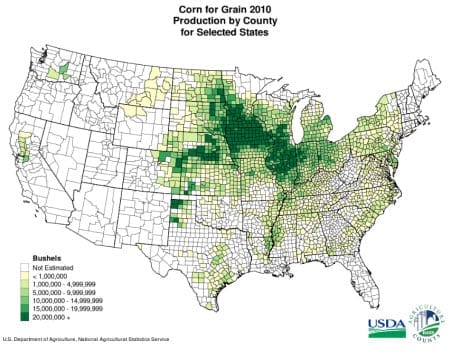This could change the way that these farms, and those that neighbor them, gain insurance coverage.
 Ahead of a vote in May that occurred in southern Oregon in which residents overwhelmingly decided to ban GMO crop use, farmers had already been in negotiations with a biotech company that has been growing these genetically modified organisms in the form of engineered sugar beets that were planted near their farms.
Ahead of a vote in May that occurred in southern Oregon in which residents overwhelmingly decided to ban GMO crop use, farmers had already been in negotiations with a biotech company that has been growing these genetically modified organisms in the form of engineered sugar beets that were planted near their farms.
The intention had been to come up with a way to be able to coexist peacefully through online mapping.
This GMO crop mapping database of fields in Oregon would allow growers in the state to be able to reduce the risk of cross-pollination between the fields that have been genetically modified, and those that have not. However, these negotiations between those farmers and Syngenta – a Swiss company – fell through and brought about the recent ban. However, the Governor of the state, John Kitzhaber, had already directed the Department of Agriculture in Oregon to take on a much more ambitious mapping project back in October 2013.
That project would map every GMO crop in the state so that more effective buffer zones could be created.
Moreover, the GMO field locations throughout Oregon would also be identified so that genetically engineered (GE) crops could be excluded from certain specific areas. This decision was a response to a number of instances of genetic contamination that the region has experienced and that has caused non-GMO crops. This event causes the harvests from those fields to become unsellable in terms of exporting them.
Should Oregon go ahead with the mapping of these fields, that state would be the first one to take this type of effort and to mandate preventive actions for crops that have been genetically engineered. Supporters say that this could make the state into a model for the rest of the country.
Equally, though, the smaller scale mapping effort failure helps to put a spotlight on the many challenges that are being faced in being able to reach a consensus when it comes to the mapping of the fields. GMO crop mapping involves a number of groups and industries, ranging from farmers to insurance companies, each with their own intentions and goals. At the moment, the recommendation from a U.S. Department of Agriculture committee is to use an informal neighbor farmer agreement combined with an insurance system that will cover contamination damages. However, many farmers feel that a great deal more disclosure is required.

After Europe released maps of fields growing GE crops there were over 80 acts of destruction of these fields. What makes Oregon officials think it will be any different here?